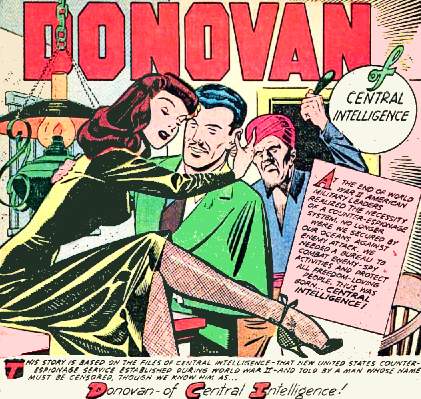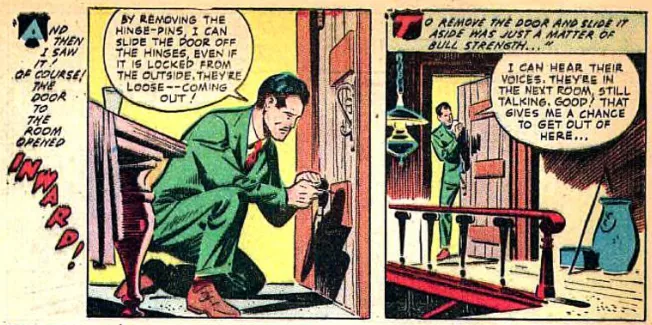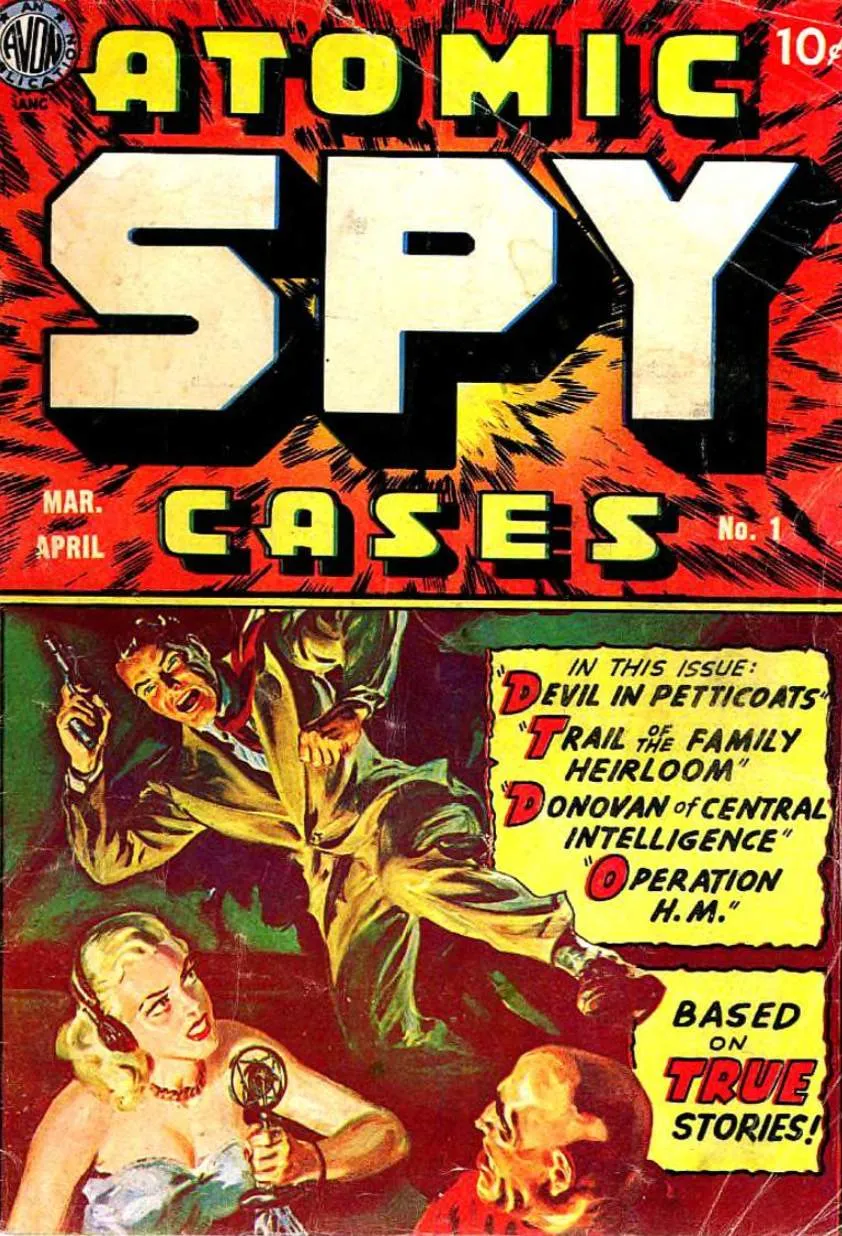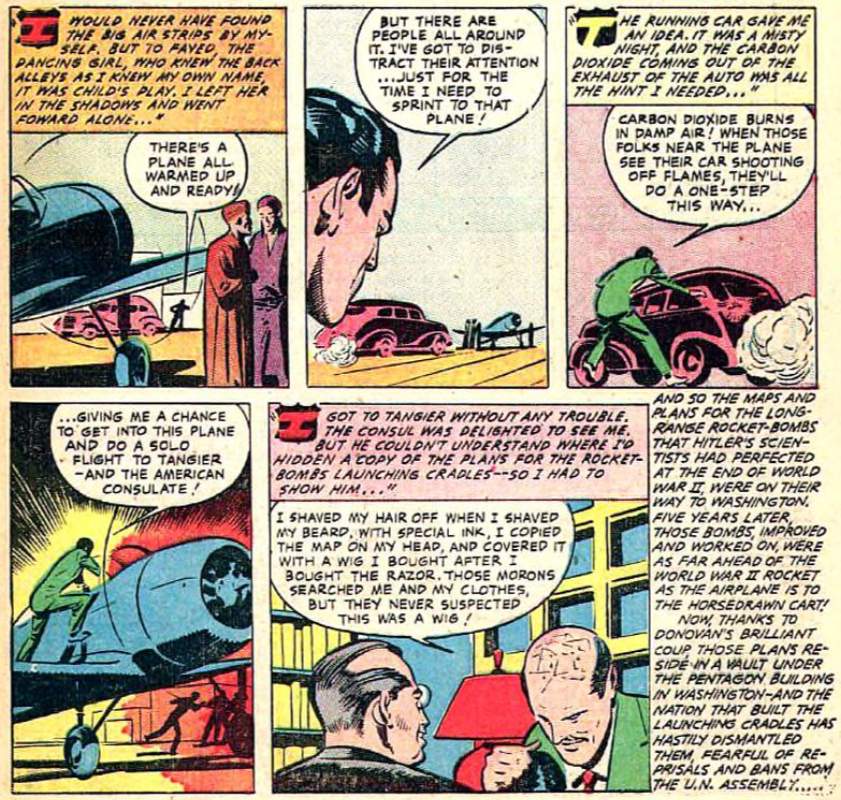Spy Mystery: Why the CIA Suppressed Top-Secret ‘Donovan’ Cartoon for 50 Years
When the CIA finally declassified the 1950 comic strip Donovan of Central Intelligence, much of the intrigue swirled around one question: Why did the Agency suppress it at all, let alone for fifty years?
Sure, the hero resembles ‘Wild Bill’ Donovan - head of the CIA’s forerunner, the Office of Strategic Services (OSS). Yes, Donovan of Central Intelligence chases women, enjoys a drink, and writes atomic bomb intel on his bald head, but why would a cartoon character concern the Director of the real-life CIA and the Agency’s Yale-educated lawyer Walter Pforzheimer?
The Agency discussed the comic strip in at least two ‘Top Secret’ CIA meetings in April 1950, according to the now-declassified minutes. It seems the CIA was irked the comic strip boasted that it was "based on the files of Central Intelligence", a claim that clearly touched a nerve whether it was true or not.

Donovan: Atomic Spy
As 1950s spy stories go, Donovan of Central Intelligence appears to be standard fare. The seven-page strip sees secret agent Donovan dodge bullets in the Sahara Desert, check into a swank hotel, meet a beautiful woman, and steal a jet to escape a gang of dangerous villains.
Along the way though, the fictional Donovan stumbles on plans for ‘launching cradles’ for missiles. Their warheads could accommodate nuclear bombs capable of wiping out the US Eastern Seaboard. Donovan wants to charter a plane and get the intel to the US consul in Tangier, Morocco. Pronto. But instead he is drawn into a honey trap and held hostage in a locked room.
Luckily, Donovan had already drawn the missile plans onto his newly shaven head (now covered with a toupée) and burned the original intel. By employing a nifty bit of spy tradecraft and his ‘bull strength’, Donovan is able to escape from the locked room and head to the airport.

Nuclear spies
The Soviets had successfully tested their first nuclear device (US codename ‘Joe-1’) in August 1949 and the air was thick with stories about atomic bombs and traitors in 1950 when Donovan of Central Intelligence came to the CIA's attention.
German-born scientist Klaus Fuchs had been arrested for leaking Manhattan Project secrets in January 1950. The arrests of Julius and Ethel Rosenberg, David Greenglass, and Harry Gold soon followed. It’s possible the Agency wondered how super-secret operative “Donovan” came across his intelligence and exactly who was behind the comic strip.
The publisher of the March-April edition of Atomic Spies, Volume I, 1950 by Avon Periodicals, was a New York publisher run by a brother-sister team that had reportedly been around for a decade.
"The brand new social experience where you activate your gaming skills as you train like a spy."
- TimeOut
Take on thrilling, high-energy espionage challenges across different game zones.

Atomic Spies

Shortly after Atomic Spies hit the newsstands, the CIA Director gave one of the 10-cent comic books to Colonel Sheffield Edwards, CIA Assistant Deputy for Inspection and Security, whose main task was to protect the Agency from enemy penetration. According to a declassified CIA memo dated Monday, April 3, 1950: DCI handed him comic magazine (sic) based on "information from the files of CIA" and the supersecret spy who is known as "Donovan of Central Intelligence".
The CIA discussed Donovan, the comic strip superspy, in-between talks about the Soviet jamming of Voice of America radio and a discussion about the Atomic Energy Commission and ORE 91-49, a study on the Effects of the Soviet possession of the Atomic Bomb.
By April 17, 1950, the CIA’s assistant general counsel, Walter Pforzheimer, was involved in the Donovan discussions. He'd been in touch with the US Postmaster General and the PG was, in turn, checking with the New York Post Office to inquire about the publication and an "inaccurate statement" in the issue, the CIA meeting notes show.
Donovan’s handsome face wasn’t seen again until December 15, 2004, when the CIA decided his exploits in North Africa were no longer worth suppressing - but that didn’t stop tongues wagging. Some noted that the fictional Donovan resembled ‘Wild Bill’ Donovan, the real-life WWII veteran and OSS leader who also dodged bullets in the desert, drank, and womanized. The OSS chief had also spent a considerable amount of his time abroad in the 1930s and ‘40s, including in Germany during Hitler’s time in power.
The OSS civilian spy agency was disbanded at the end of WWII and the real-life Donovan went back to practicing law, first prosecuting Nazis at the Nuremberg War Crimes Tribunal and later as a Wall Street lawyer.

The Disappearing Donovan
It seems the fictional Donovan was also an expert in German matters. Cartoon Donovan reached the American consulate in Tangier and shared the secret plans for long-range rocket bombs that Hitler’s scientists had perfected at the end of WWII and had vastly improved by 1950, the comic book said.
The CIA posted a copy of Donovan of Central Intelligence on the Agency’s website on November 6, 2023, but made no further comment.
Atomic Spies - advertised as a bi-monthly - does not seem to have ever been published again. Donovan of Central Intelligence may have carried on under another assumed identity, but uncovering that has proven to be as challenging as decoding a secret message.
SPYSCAPE+

Join now to get True Spies episodes early and ad-free every week, plus subscriber-only Debriefs and Q&As to bring you closer to your favorite spies and stories from the show. You’ll also get our exclusive series The Razumov Files and The Great James Bond Car Robbery!


Gadgets & Gifts
Explore a world of secrets together. Navigate through interactive exhibits and missions to discover your spy roles.
Your Spy Skills
We all have valuable spy skills - your mission is to discover yours. See if you have what it takes to be a secret agent, with our authentic spy skills evaluation* developed by a former Head of Training at British Intelligence. It's FREE so share & compare with friends now!
* Find more information about the scientific methods behind the evaluation here.


Stay Connected
Follow us for the latest
TIKTOK
INSTAGRAM
X
FACEBOOK
YOUTUBE